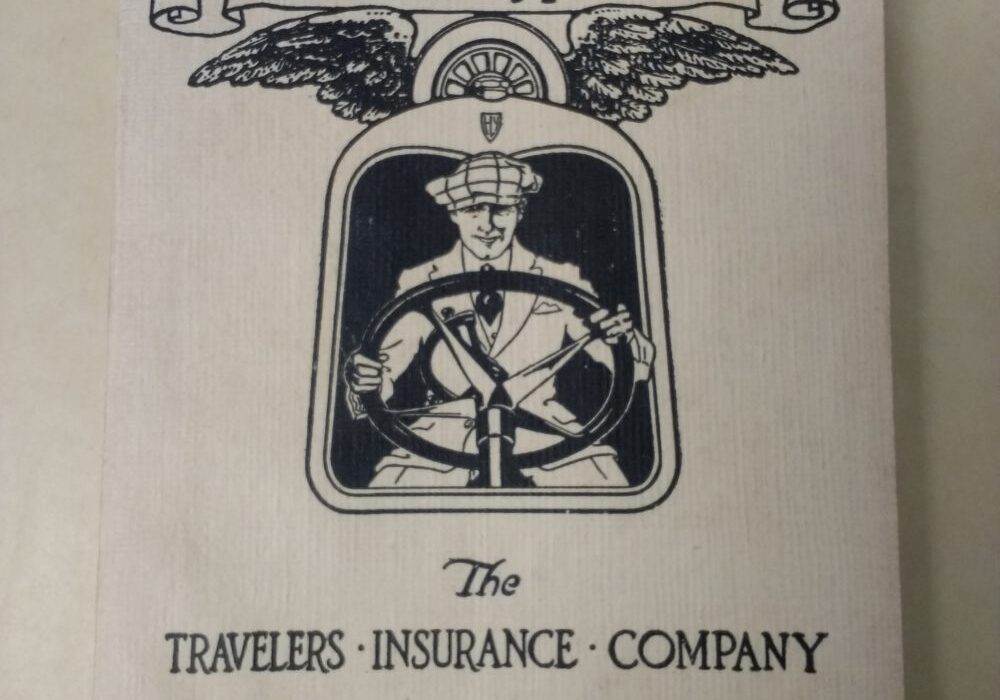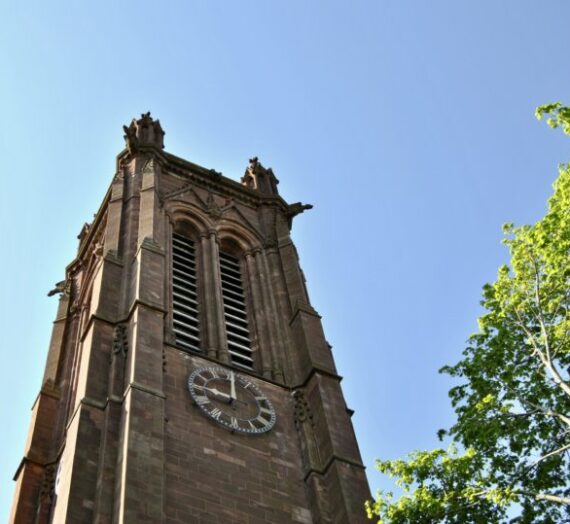Hartford has a Climate Action Plan. It has six action areas, one of which is transportation. Five goals have been developed for that section:
- Increase Walking and Biking
- Increase Transit Use
- Decrease Emissions from Vehicles
- Make Streets Safer
- Increase Transportation Resiliency
These are fine goals, but they feel out of reach most days, even with the hard fact that “cars contribute to climate change and pollute our air. And people who drive cars do not enjoy the health and exercise benefits of walking and biking,” as the plan boldly and accurately states.
The goals are interconnected. If we want to increase walking and biking, we must make our streets safer.
How do we make that happen when there is pushback on most sides?
Too many City of Hartford employees have a Can’t Do attitude.
We have a larger culture that makes backwards choices. Instead of closing select streets to traffic for a few hours on Halloween — a favor we do for marathon runners — people organize trick-or-treating in shopping malls or in parking lots out of car trunks. Instead of acting like we are on the brink of climate crisis, the Department of Tar is adding a lane to the Charter Oak Bridge.
And, we have a culture that is stuck on the myth of shared responsibility.
Last month, the US Department of Transportation’s National Highway Traffic Safety Administration (NHSTA) published research showing that “pedestrian fatalities in crashes increased 53 percent in the last decade (2009 to 2018) with the pedestrians’ share of traffic fatalities increasing 42 percent, from 12 to 17 percent.” The majority (74%) of these fatalities nationwide occurred in urbanized areas.
The Governors Highway Safety Association, in February 2019, released data showing that “the number of pedestrian fatalities in the United States has grown sharply. During the 10-year period from 2008 to 2017, the number of pedestrian fatalities increased by 35 percent (from 4,414 deaths in 2008 to 5,977 deaths in 2017). NHSTA’s March 2019 report was based on data from the GHSA, which obtains it from the Fatality Analysis Reporting System.
The report plainly states one of the contributors to this increase: “the number of pedestrian fatalities involving SUVs increased at a faster rate — 50 percent — from 2013 to 2017 compared to passenger cars, which increased by 30 percent.”
Instead of digging into that or into the failed legislation that another news outlet covered last month, what we got from the Connecticut Department of Transportation was a statement about how pedestrians need to “visible, predictable, and thoughtful.”
If that quote was taken out of context by the Courant, then shame on them. If it wasn’t, then shame on the CT DOT.
Victim-blaming is neither tasteful nor useful.
It also is not unique to the CT DOT, who merely regurgitated the same advice that can be found in various other places. But, if you are not putting responsibility squarely on motorists who can cause the most harm during collisions, you can GTFO.
The same day as the newspaper published its write up that included that quote from the DOT, an elderly woman in Hartford lost her life when a teen in a stolen car rammed her with the vehicle. While sad, this was not remotely shocking nor out of the ordinary. In August, another woman in a different Hartford neighborhood was killed by a stolen, speeding vehicle. An elderly man was killed in February when a driver without a CDL struck him with a tractor trailer on Walnut Street. Last October, another elderly man was run down, this time on Wethersfield Avenue, by someone who was not traveling in the proper lane.
These deaths are not inevitable. The solutions may not be simple, yet neither are they overly complicated. A few suggestions:
Fix the roads: And in some cases, re-fix them. Several recent intersection projects actually went in an opposite direction from Complete Streets. Stop filling the potholes — these are nature’s speed humps — and start making protected bike lanes that connect to other protected bike lanes. Protect bike lanes with bollards, giant plants, fences — but not with paint. Install crosswalks in sensible locations. Stop asking pedestrians to walk three blocks out of their way to get across the road. Have pedestrian light cycles at all signalized intersections and give pedestrians the right of way by making those lights automatic, just like the automatic light cycles that cars get. Send engineers out on foot, in wheelchairs, and with other mobility devices to test out intersections to see how accessible they are.
Fix the cars: One of the most horrifying moments in a movie is in a Tarantino car chase flick. The villain has agreed to give a stranger a ride in his modified stunt car, which he claims is “death proof.” Before he drives recklessly with the intent to torture and kill her, he says this: “This car is a hundred percent death proof. Only to get the benefit of it, honey, you really need to be sitting in my seat.” This is what I think of when I hear how cars are only getting safer. You really have to be inside the car to reap those benefits. A 1998 New York Times article called out the dangers of SUVs and pickups as they got larger, and though this only focused on risks to other drivers, the concern was present twenty years ago. There is no way to be visible to these drivers at close range unless you are 6′ or taller. All manner of photos and graphics exist to describe this problem. Now, fix it.
Lower the speed limit: Have a consistent, low speed limit throughout the city. Nobody needs to drive 45 MPH on our streets. Save that for the interstates.
Reduce vehicle theft: There is a reason the expression “drive it like you stole it” exists, and there is a reason that people are being killed by those driving stolen cars. But, most thieves are not that bright. They are taking what they can easily get. The cops have said it countless times: lock your car, hide the key fob, and don’t leave it running and unattended. Many of the cars involved in these murders were stolen from the suburbs. At this point, with so many reminders issued, I would not oppose legislation that held owners responsible as accessories to manslaughter if it is found that they did not bother to lock up. Mayberry does not exist; lock your doors.
Enforce Laws and Provide Consequences: We have cops. We have courtrooms. Reckless, careless, and dangerous use of motor vehicles should have severe consequences. As we can see in Hartford, vehicles are about even with guns and knives when it comes to causes of death. There are other consequences besides jail time. Give tickets more often. Strip people temporarily and then permanently of their license, sooner, for severe infractions. Make drivers’ licenses harder to obtain through more rigorous testing. Require a special license to drive those jacked up pickup trucks and SUVS. Ticket and tow vehicles parked in bike lanes, which put cyclists at risk when we have to move into traffic lanes, often without much warning. Pull people over who do not yield to the pedestrian, even when the vehicle has not struck the person. Work on getting those red light cameras.
Insist on Driver Responsibility: Stop looking for ways to push the blame onto victims. Stop trotting out myths about pedestrians being distracted by phones; data shows that pedestrian phone/device use is not the problem. Stop urging pedestrians to make eye contact with drivers.
While I am not one for the saccharine emotion of nostalgia, I will say this: one of the insurance companies got a few things right back in 1920. The Travelers Insurance Company published a booklet (see pic) that provided comprehensive safety information, much of it explaining how to operate and maintain one’s “pleasure type cars.”
They provided tips like:
Excessive speed is one of the chief causes of [crashes], and many drivers have a mania for traveling at a high rate, even when there is no definite object in doing so, and when conditions make the practice distinctly hazardous.
and
Laws limiting the speed of automobiles have been enacted […] and it is safe to say that if the legal speeds were never exceeded the number of [crashes] would be greatly reduced
and
Never attempt to drive at high speed at night — especially if your headlights are not burning properly
and
Always keep your eyes on the road
and
Always be careful and courteous on the road
and
The resulting increase in the amount of traffic on both city streets and suburban highways demands greater caution and vigilance on the part of operators of motor vehicles
and
Children, and even grown persons, often become confused and suddenly move in directions totally unexpected and unforeseen by the automobile operator, and he should be on his guard against behavior of this kind
and
The driver, when running the car near the curb, should always be on the watch for persons who may step from the sidewalk into the street without looking about them or giving indication of their intentions in advance. The most careful person is likely to do this at times, through absent-mindedness or preoccupation, and it is only by exercising constant vigilance that the automobilist can avoid [crashes] due to this cause.
Nowhere in the booklet did anyone have the audacity, or ignorance of physics, to push for shared responsibility.



Chris D
🙌🙌🙌
Allie
Driving in LA on a trip this summer was a revelation – was expecting traffic hell, and got truly courteous, safe drivers even during rush hour. Realized CT is indeed traffic hell. I swear a lot of it has to do with apparently everyone driving their kid to school instead of using the schoolbuses; and people driving like they’re in a video game and having a delusional sense of physics and real life consequences… The way the Hartford region has gone about putting in bike lanes with no public awareness campaigns for either drivers or cyclists on how to coexist, has terrified me– and kept me from getting a bike. I don’t know how the stats compare between Hartford and LA, but anecdotally drivers are safer and more courteous out there because the traffic laws are really enforced. A ton of metal traveling at high velocities with a combustion engine inside is inherently more of a threat than a pedestrian or cyclist – that’s why it makes sense that, by law, pedestrians and cyclists have right of way, if I’m not mistaken. We absolutely need more enforcement and, I would argue, more rumble strips, to force drivers to slow down and follow the traffic laws. We could also use more driver re-testing and re-education since the streetscapes are changing so drastically.